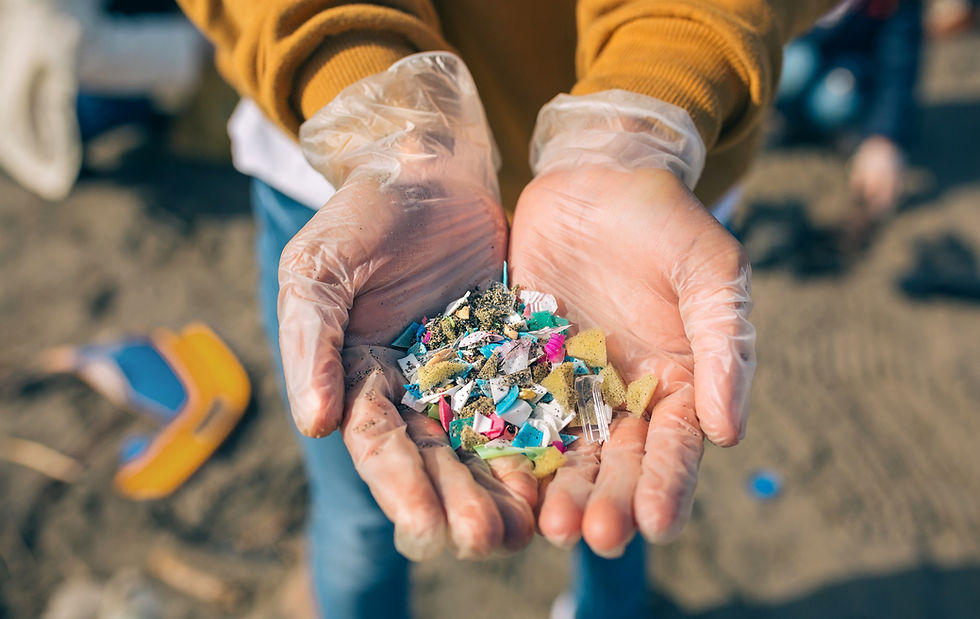
Virtually all plastic that’s ever been made still exists (minus the part that’s been burnt for energy, basically). But in what other unlikely places has plastic been discovered?
1. Human blood
Let’s start off with the big one. Last year, Common Seas led a study which came to the shocking revelation that plastic had been found in human blood. The consequences? We don’t actually know. The full-scope of long-term effects of plastic on the human body remains a mystery, although initial findings are looking bleak, to say the least (from heavy carcinogenic, to Alzheimer’s or erectile and reproduction disruptors, it’s a whole “pick your menu” situation out there). These first findings are making it even more necessary to support vital research into the potentially harmful effects on human health.
2. Foetuses
It’s not just our own bodies that’s become an increasing cause for concern where plastic is involved. Microplastic particles can travel through our membranes and may even lodge in organs, with potentially detrimental effects on unborn foetuses. And it’s not just the case with human foetuses. Most species of seabird have been found with plastic in their systems, the ingestion of which can cause damage to their digestive tracts and blood chemistry. This in turn interferes with hormone function and their ability to safely produce viable young.
3. The air
What if we told you that every breath of air you breathe comes with an invisible dose of nanoplastics? It may be tinier than your eyes can see, but the global prevalence of microscopic plastics is no small issue. Shown to cause damage to human cells in the lab, microplastics may be contributing to the millions of early deaths caused by polluted air every year. Dementia, heart and lung disease, fertility problems and reduced intelligence are all associated with polluted air.
4. Rain
Is it an apocalyptic nightmare? Plastic rain may sound like the stuff of hellish fantasy, but it’s happening. From the Pyrenees to the Rocky mountains, rainwater is no longer as pure as we might like to believe. These tiny plastic particles may even have the power to influence cloud formation, with knock-on effects on weather patterns, rainfall and our changing climate.
5. Deep sea
From the skies to the seas, there’s no escaping plastic. On quests for new discoveries, deep-sea missions have found plastic at the deepest points of our oceans, including the Mariana Trench.
6. Table salt
Thought the presence of plastic in the far reaches of our oceans was shocking? Buckle up because it’s about to get even weirder: tequila shots with a side of plastic, anyone? If it’s floating in the ocean, it’s barely surprising that microscopic plastic particles are finding their way into sea salt, infiltrating our favourite dancefloor consumables.
7. Honey
And it’s not just the salt - plastic is making its way into the sweet stuff too. Like any product packed up in plastic bottles and containers, harmful particles are leached into our favourite foods and drinks - including squeezy bottles of honey.
8. Bees
If plastic is found in honey, it may be less of a surprise that it has been found in bees too. But the leaching of microplastics from plastic containers is not the only way your honey is contaminated; honey bees are accumulating microplastics into their bodies. These tiny plastic fibres are primarily incorporated into their wax, but traces have also been identified in their larvae and honey.
9. Beer
Like many other consumable products, the brewing process is far from immune to the influence of plastics. Why so, you ask? Because the key ingredient of beer happens to be… water! From beer to bottled water, it’s estimated that the average person consumes about 78,000 to 211,000 microplastic particles each year. Would you believe us if we said that’s equivalent to ingesting a credit card’s worth of plastic every single week?
10. Human excrement
Well, what goes in has to come out, right? In a study, researchers found evidence of microplastics in every single stool sample from participants across Europe. Bingo! And another research suggests that this trend is even more prevalent in babies.
Why is plastic everywhere?
But why is this happening? The durability of plastic means it’s not digestible by its very nature, and the persistence of this synthetic material does more harm than just messing up our landscapes. Chemical leaching has been linked to increased cancer risk and oestrogen disruption, with many more health effects unknown.
As we come to terms with the fact that plastic is in us, there’s one big question that remains the elephant in the room: how, and how much will our contaminated veins affect us?
Without urgent and heavy funding of independent research, the potentially harmful impacts of synthetic microplastics on human health will remain untold.
Alongside more than 80 parliamentarians, NGOs and scientists, Bye Bye Plastic Foundation stands in solidarity with Common Seas as they call for a £15 million National Plastic Health Impact Research Fund.
So, why don’t you take your stand & sign with us! Help us fund more research on the health impacts of plastic and help the petition reach 150,000 signatures here.


Comments